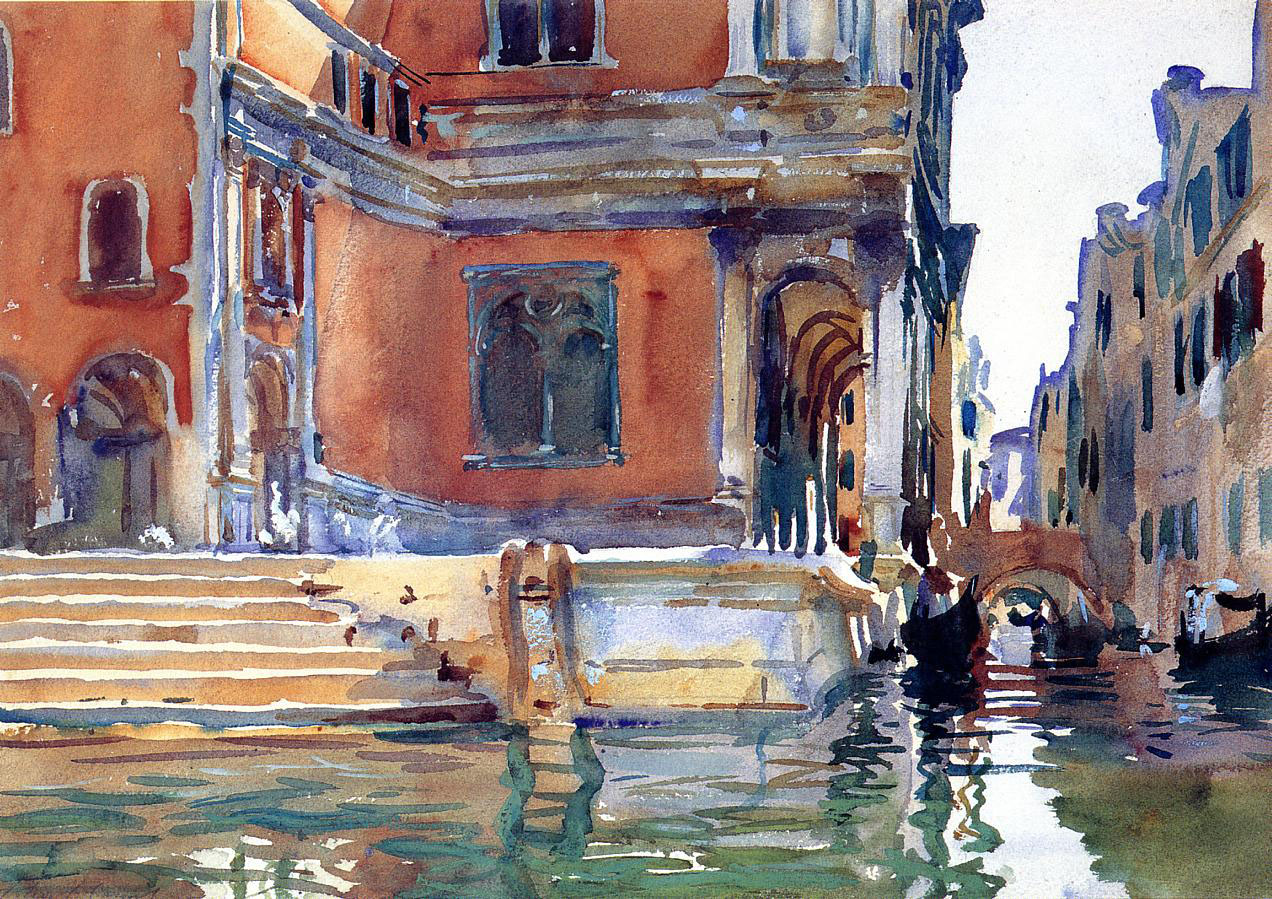Yesterday I finally made it to the Dulwich Picture Gallery to see their exhibition of Sargent watercolours (it ends on Sunday and the final weekend's likely to be a bit of a scrum). This is a popular exhibition, and it's not hard to see why: Sargent's watercolours are a joy to look at, technically brilliant, easy on the eye and full of sunlight – (to quote Lord Clark of Civilisation) what could be more agreeable? Painted en plein air, they are the products of Sargent's leisure and travels, of his time off from the gruelling production-line process of portrait painting, and, for all their virtuosity, feel relaxed and effortless. Anyone who has tried their hand at watercolour can only gaze in awe at Sargent's jaw-dropping mastery of the medium.
The pictures, painted in Venice, around the Med, in the Alps and various parts of France, Italy and Spain, the Middle East, North Africa and elsewhere, show a continuing preoccupation with painting effects of light on water and stone, of reflected light from water onto stone, of strong sun and complex shadow, and the particular problems of rendering light and shade on white material against white paper (as in the dress of the poster girl, Lady with Umbrella, above left).
In Venice, Sargent paints at water level, from a gondola, fascinated by the effects of light where stone and water meet, by the play of light on the underside of bridges and the hulls of boats. There are no grand panoramas or conventional postcard views of the city; Sargent's engagement is intimate and detailed, the rapt attention of an artist rather than a tourist. He doesn't paint a palazzo – he paints one corner of it, from water level – and when, elsewhere in Italy, he paints a grand Baroque fountain he ignores the statue at the centre in favour of studying the meeting of stone and water at the edge of its pool. Most of these paintings could be classed as studies rather than finished works – but when studies are of this quality, the distinction hardly matters. Sargent himself lined his walls not with oils but with these watercolours, which no doubt also served as happy reminders of his travels and leisure time (others on show in the exhibition – rather less successful – are from Sargent's time as a war artist, and there are a few portrait studies of male nudes).
Walking around the exhibition – which is of manageable size, around 90 works – I realised I'd seen some of these pictures before, at the Royal Academy's Sargent and the Sea exhibition back in 2010 (including The One I'd Have Stolen). This time, the one I'd have stolen (theoretically, Your Honour) was the Spanish Fountain (above right), as perfect a study of sunlight on water and stone as anyone ever painted in watercolour. This is a thoroughly enjoyable exhibition, and I'm glad I made it – just.
Subscribe to:
Post Comments (Atom)



No comments:
Post a Comment